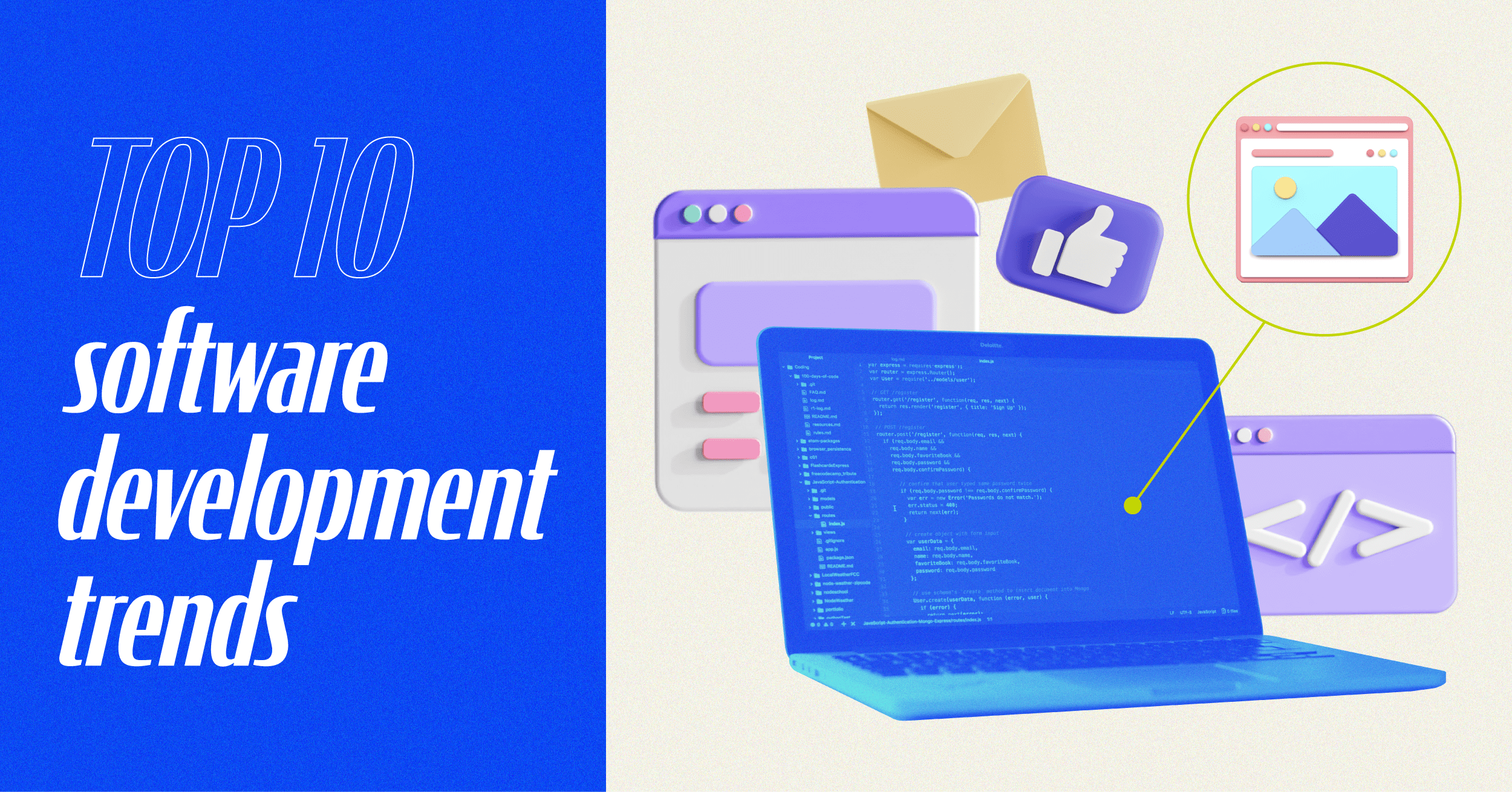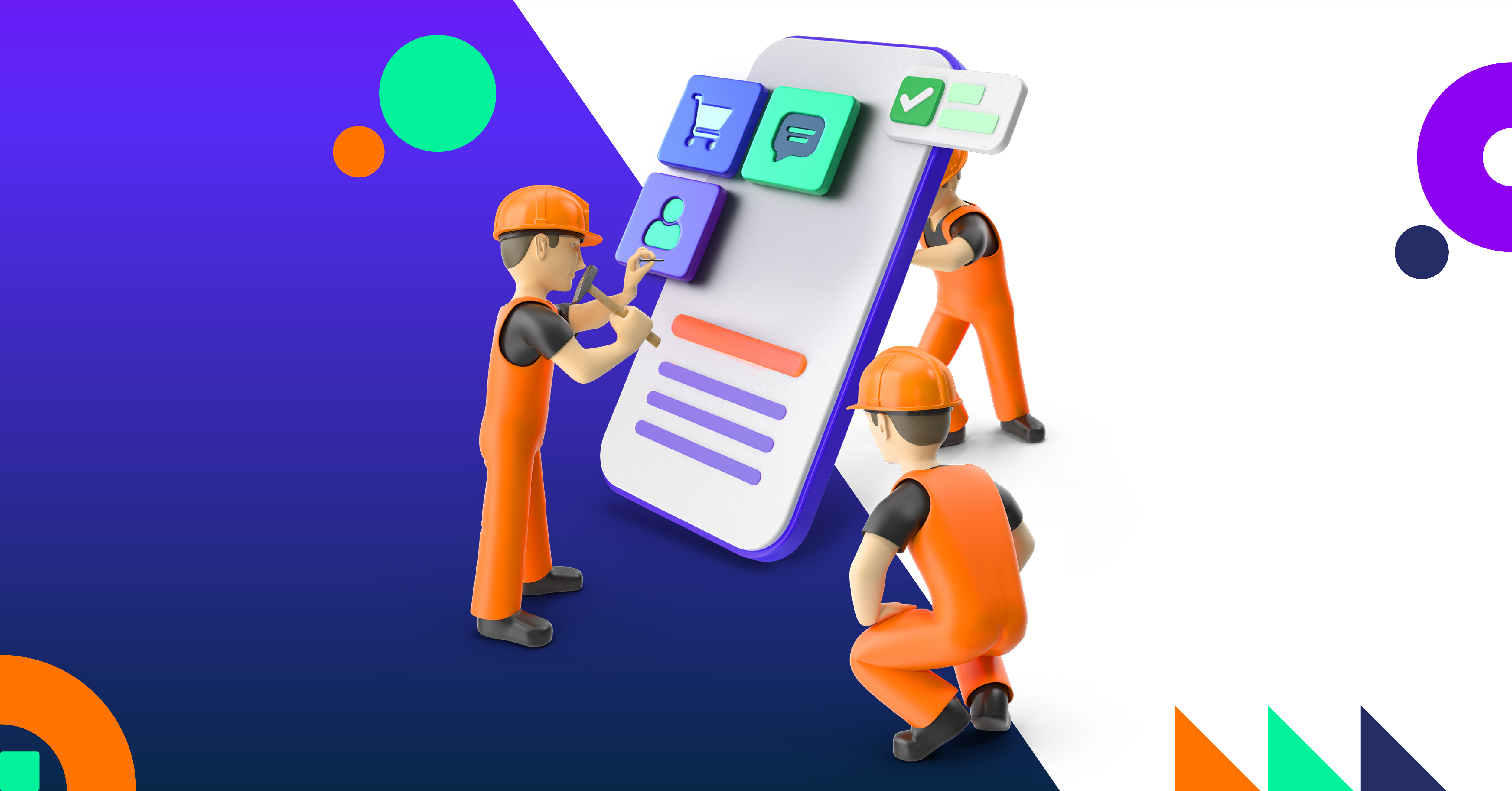Top 10 Software Development Trends in the Tech Industry
by Paula Ann-Jane Santillan • August 30, 2022
Since its origin, software development has never ceased to evolve. If anything, it became more dynamic and improved in line with many external factors, consumer needs, and emerging technologies. Recognizing how compelling software development trends are, it’s high time for you to start looking into the significance of staying on top of the industry trends. There’s much potential for growth in understanding tech’s current state and trajectory.
Below, we’ve listed some of the latest technology trends in software development projected to shape and impact the tech industry in the months ahead.
 Source: unsplash.com
Source: unsplash.com
10 Software Development Trends To Look Out for
1. Low-code and No-code Applications
Low-code and no-code software development trends are quickly becoming popular. They allow the designing and developing of software through intuitive visual tools that reduce or remove the users’ need to write code from scratch. According to research, up to 70% of new applications will be created using low-code or no-code technology by 2025.
Source: tigersheet.com
With software development’s level of complexity and its need for quick delivery, it’s not surprising for this tech to become an alternative in solving IT talent shortages. Although low-code and no-code tools can never fully replace coding, more businesses have seen their benefits, like allowing anyone to build apps through drag-and-drop editors.
2. Artificial Intelligence (AI)
AI is one of the most thriving software development trends there is. Any programmed machines that can simulate and mimic human-like thinking or actions are considered artificial intelligence. Gone were the days when we thought AI was futuristic. With the number of software using AI technology as a core feature in their development, we’ve reached the future.
It’s worth noting that there’s no telling of AI’s full potential; experts have barely scratched the surface of AI’s possibility. However, progress in this area is already impressive as it is. AIs have become intelligent enough to replace humans in some areas and have even grown into self-learning entities.
3. Augmented Reality (AR), Virtual Reality (VR), and Mixed Reality (MR)
Did you know that AR, VR, and MR date back to 1838? But due to their high development costs and other challenges, they were left long idle in the tech industry. All thanks to the rise of the Metaverse coupled with consumers craving new experiences, we’ll be seeing the brighter side of these trends. A recent [survey](https://www.statista.com/statistics/591181/global-augmented-virtual-reality-market-size/#:~:text=The%20global%20augmented%20reality%20(AR,billion%20U.S.%20dollars%20by%202024) says AR/VR/MR market value has reached $28 billion in 2021 and will continue to grow until 2028. This goes to show how likely AR, VR, and MR will transform how we soon interact with the world.
Source: www.digitaltvnews.net/
4. Cloud Computing Technology
One of the most game-changing software development trends on the list is cloud or serverless computing. Its invention has proven helpful to many developers. Without the need for physical infrastructure management, the development process became faster. Developers now have more time building applications directly employable in the cloud.
Moreover, you can consider cloud computing one of the latest technology trends in software development with the highest demand since the start of remote work. Many businesses have shifted to cloud-powered services since these tools can sustain this work environment—even boost effortless collaboration.
5. Progressive Web Apps
Another innovative trend in the tech industry is PWA or progressive web apps. Soon after Google proposed this technology in 2015, it was well-received due to its simple development and positive user experience. You can think of PWA as a website built using web-based languages—such as CSS, HTML, and JavaScript—but acts like an app, making it the best of both web and mobile apps. Smartphones have long years of being outdated, and so this trend has a long shot to continue evolving.
6. Data Security
While there’s so much plus side to the world becoming more digital than ever, you can’t ignore the internet risks threatening on the surface. Since cyberattacks and data breaches are something you can’t control, we rely on digital and data security to take care of these things. Next to the growing “data as a service” approach of many software development trends, data security solutions will follow this arc for safer data interaction.
7. Blockchain Technology
There are many benefits to the rise of the Metaverse. For one, it transformed blockchain technology into broad applications outside of cryptocurrency. Blockchain’s ability to store any data type makes it a secure tech. Many sectors, like healthcare, logistics, publishing, and art, have seen its benefits and are now leveraging its power.
8. Modern Programming Language
Amid many new emerging technologies, a few established ones have consistently been on top throughout time, like Python and Java. These programming languages are still going strong, dominating the software development field.
However, a few modern programming languages with modern solutions have emerged to compete. Languages like Rust, TypeScript and Kotlin offer a better user experience for developers, resulting in them becoming well-received and mainstream. Looking into these new languages may be an advantage because they may soon replace traditional programming languages—note that Kotlin has already outdone Java in mobile development.
Source: nix-united.com
9. UI / UX
UI/UX used to be the last thing developers thought about when creating software. However, as the world continues to digitize and users rely more on digital goods, it’s expected that user demands will dramatically shift. Consumers will depend heavily on software with ease of access and unique user experiences instead of being a critic of the software logic. As said by UserGuiding, a better UI could boost the conversion rate by 200%.
More businesses are now starting to revamp their technologies based on well-adapted trends. Plus, this isn’t the end because we’ll be seeing even more software banking on UI/UX moving forward.
10. Software Development Outsourcing
As software development continues to make noise, we’ve seen software development outsourcing simultaneously having significant growth. Many industries strive to innovate new solutions, but there’s also the challenge of finding talented developers able to develop software projects within a budget. In turn, outsourcing has become the best route for businesses to keep up with software development trends. It’s practical, offers a faster development process, and is cost-effective.
A New Era of Software Development
To sum up, software development trends have the power to change the way we manage, develop, and consume software. For now, they point to an uncharted yet exciting era of developer and consumer experience. While many factors at play are still likely to affect their movement, their growth is inevitable—especially with the level of influence these technologies have in major aspects of our lives.
Software-development

